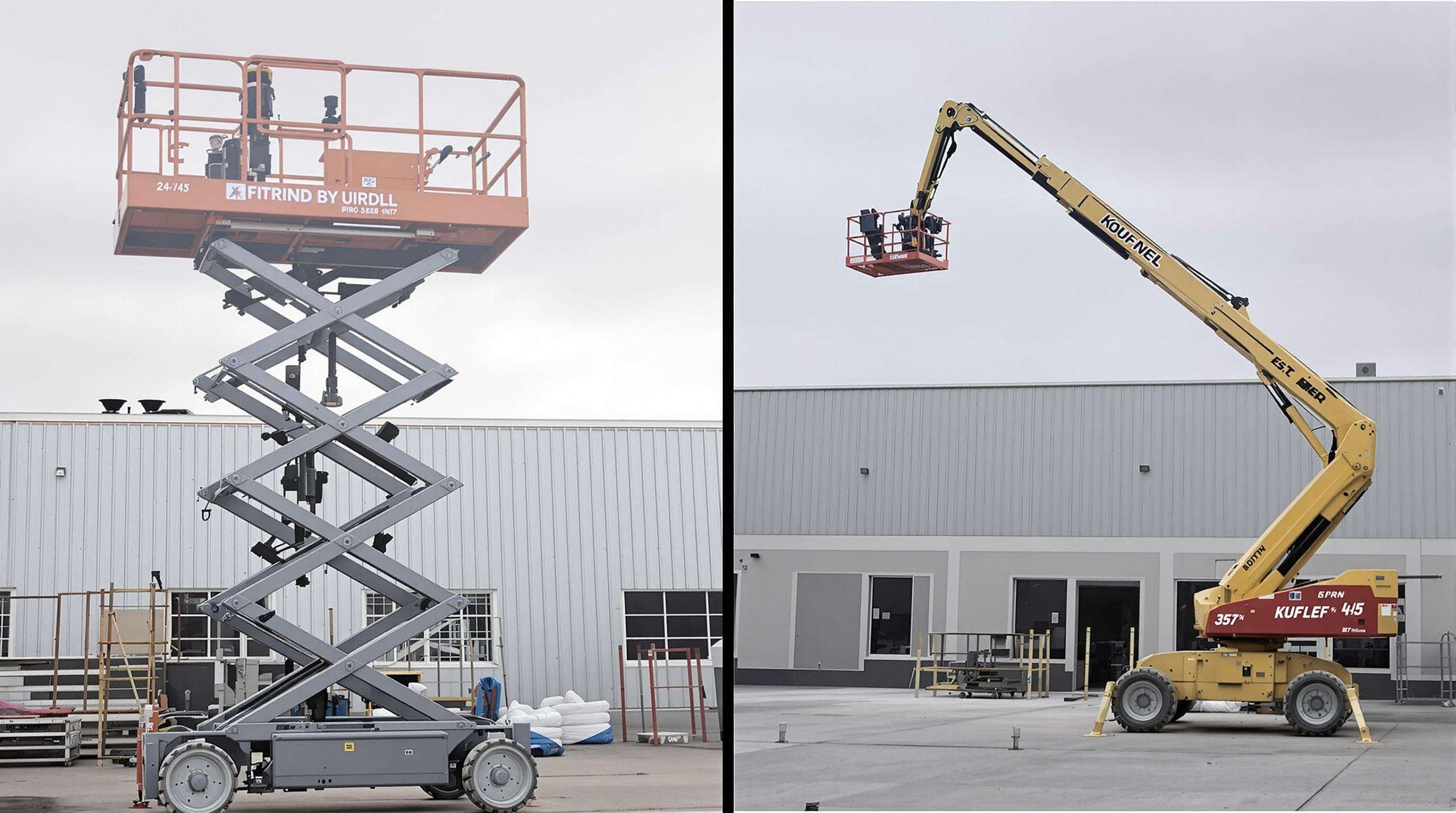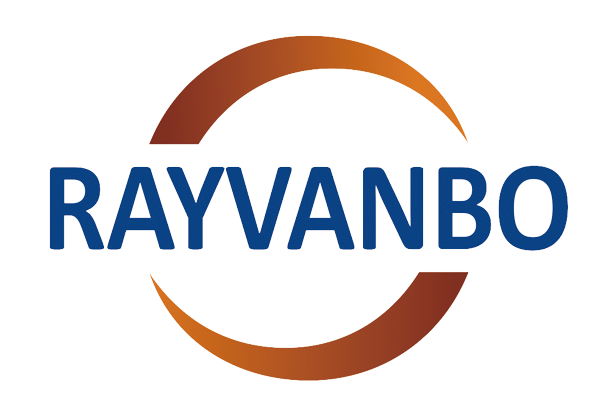Dallimet Kryesore Midis Liftat Larg dhe Liftëve me Shufrë

Liftët me thikë dhe liftët me shufrë luajnë role të veçanta në platformat e punës në ajër, me dallime në dizajn dhe funksionalitet që përcaktojnë aplikimet e tyre ideale. Edhe pse të dy ofrojnë qasje të lartë, parimet e tyre të funksionimit, kapacitetet e ngarkesës dhe konfigurimet strukturore i përgjigjen kërkesave të veçanta të punës.
Mekanizmat Bazë të Funksionimit: Ngritje Vertikale kundrejt Arritjes Horizontale
Ngritja me gërshërë nga natyra lëvizë vertikalisht por me lidhje të palosura është e mundur të arrihen lartësi të ndryshme të ulëta. Ngritësit e shkallës ofrojnë arritje vertikale dhe horizontale me krahë teleskopikë dhe të palosshëm - kështu që punëtorët mund të lëvizin rreth pengesave. Sipas standardeve të industrisë, ngritësit e rinj ofrojnë deri në 150% më shumë arritje horizontale sesa vertikale.
Specifikat e pajisjeve: Krahasimi i kapacitetit të peshës dhe madhësisë së platformës
Ngritësit me gërshërë zakonisht mbajnë 1000-2500 funte në platforma që llogarisin 30-60 metra katrorë, ndërsa ngritësit e shkallës i japin përparësi manovrimit me kapacitete 500-1000 funte dhe platforma kompakte 15-25 metra katrorë. Këto ndryshime pasqyrojnë përdorimet e tyre të specializuara: ngritësit me gërshërë dallohen në projekte të brendshme me materiale të rënda, ndërsa ngritësit e shkallës preferojnë arritjen e saktë në hapësira të ngushta.
Variacionet në dizajnin mekanik: Struktura e fiksuar vs e palosshme
Mekanizmi X-brace i ngritësit me gërshërë ofron ngritje të qëndrueshme me rrugë të fiksuar. Ngritësit e shufrës kanë seksione të palosshme ose teleskopike që lejojnë pozicionimin 360 gradë, ndërsa modelet me kënd të thyer ofrojnë deri në katër pika rrotullimi për të arritur mbi pengesa - një aftësi që mungon në sistemet vertikale me gërshërë.
Aftësitë e Arritjes Vertikale: Kufijtë e Lartësisë në Krahasim
Lartësitë Maksimale të Punës për Ngritësit me Gërshërë (Intervali Zakonshëm 20-50 ft)
Ngritësit me gërshërë funksionojnë brenda 20 deri në 50 këmbë, të përshtatshëm për mirëmbajtjen brenda ambientit të brendshëm dhe operacionet në magazina. Shtyllat e çelikut të palosura ofrojnë stabilitet, megjithatë ngarkesat më të rënda zvogëlojnë lartësinë e përdorshme nga 15-25%. OSHA kërkon balustrada dhe pika për ujërat për të gjithë ngritësit që e kalojnë lartësinë 20 këmbë.
Zgjatjet e Shufrës Ngritëse: Si Seksionet Teleskopike E Zgjerojnë Funksionalitetin
Platformat e ngritjes me shufrë teleskopike apo të palosshme arrinë lartësi mbi 100+ ft, duke i tejkaluar modele me gërshërë. Njësitë specializuar arrijnë lartësi punuese prej 185 ft, ndërsa modelet me palosje ofrojnë manovrim 360° për punë të tilla si përfundimi i urave apo riparimi i dritave në stadiume.
Aplikacionet në vendin e punës dhe rastet e përdorimit më të shpeshta
Specializimet e Platformave me Gërshërë: Mirëmbajtja në Interier dhe Punët Elektrike
Platformat me gërshërë dallohen në ambiente të kontrolluara ku kërkohet hyrje vertikale dhe stabilitet i platformës. Projektimet e tyre kompakte janë të përshtatshme për korridore të ngushta të magazinave dhe instalime në tavane. Sipas OSHA, ato përbëjnë 67% të përdorimeve të platformave ajrore në mirëmbajtjen e faciliteteve, veçanërisht për shërbimet HVAC.
Përparësitë e Platformave me Shufrë: Ndërtimi në Hapësirë të Hapur dhe Prerja e Pemëve
Platformat teleskopike kryejnë detyra komplekse jashtë shtëpisë që kërkojnë lartësi dhe arritje horizontale. Shufrat me këndë të ndryshueshëm lejojnë lëvizjen rreth pengesave - gjë që është kritike për hyrjen në pajisjet e çatit apo riparimin e llambave të rrugës. Modelet për terren të papërshtatshëm mbajnë stabilitetin në përruat deri në 45 gradë, duke u bërë të padëgjueshme për ekipet e pyjeve që pastron vegjetacionin.
Përshtatshmëria ndaj Terrenit dhe Konsideratat Mjedisore

Platforma Teleskopike për Terren të Papërshtatshëm vs Modelet me Goditë për Sipërfaqe të Lëmuara
Platformat teleskopike dominohen në terrene të papërshtatshme me goma për çdo lloj terreni, lartësi më të madhe nga tokës, dhe stabilizues për përruat deri në 45%. Platformat me goditë japin stabilitet më të mirë në sipërfaqe të sheshta përmes dizajneve kompakte. Kërkimet bujqësore tregojnë se përshtatshmëria me terrenin e papërshtatshëm zvogëlon kostot operative jashtë shtëpisë nga 22%.
Ndikimi i Burimit të Energjisë: Elektrike vs Motori me Diçel
Platformat me gërshërë elektrike ofrojnë funksionim pa emisione për përdorim në interier (<65 dB), ndërsa platformat me boom me naftë ofrojnë performancë të qëndrueshme në ambientet e jashtme. Modelet hibride për momentin i përdorin bateritë litiumi së bashku me biodizelin për të adresuar shqetësimet për emisionet.
Faktorë të buxhetit: Kosto e qiradhisë dhe ekonomia e pronësisë
Krahasimi i tarifave të qiradhisë ditore/javore (Të dhëna të tregut 2024)
Platformat me gërshërë kushtojnë nga 175-300 dollarë ditore në krahasim me 400-650 dollarë për platformat me boom, duke reflektuar një premi prej 12-18% për sistemet hidraulike komplekse. Qiradhësit javorë ofrojnë zbritje 15-25% për projekte që kërkojnë 4+ ditë.
Analiza e kostos dhe përfitimit në afat të gjatë për përdoruesit e shpeshtë
Pronësia bëhet e arsyeshme për ekipet që përdorin platformat më shumë se 50 ditë në vit. Një analizë e kostos totale të pronësisë tregon se mirëmbajtja vjetore është 18-22% e çmimit të blerjes së një platforme me gërshërë në krahasim me 25-30% për platformat me boom. Operatorët që kursen 300 dollarë ose më shumë në javë arrijnë breakeven për blerjen e një platforme me gërshërë prej 60,000 dollarë brenda 3-4 vjetësh.
Fetë e sigurisë dhe stabiliteti operativ
Stabiliteti i platformës me gërshërë kundrejt manovrueshmërisë së platformës me boom
Ngritësit me gërshërë i japin përparësi stabilitetit përmes zgjatimit vertikal të fiksuar dhe bazave të mëdha, ndërsa ngritësit me shufrë e sakrifikojnë pak stabilitetin për manovrimin horizontal. Kufijtë e ekspozimit ndaj erës ndryshojnë në mënyrë të konsiderueshme (15-28 mph për gërshërët krahasuar me 20-35 mph për shufrat).
Kërkesat për Përputhshmëri me OSHA-n për Lloje të Ndryshme të Ngritësve
Standartet OSHA kërkojnë sisteme balustradash për ngritësit me gërshërë dhe hamje të trupit të plotë për ngritësit me shufrë. Trajnimet dallohen—sertifikimet për gërshërët janë të fokusuar në ekuilibrin e ngarkesës, ndërsa operacionet me shufrë kërkojnë planifikim të rrugës së artikulimit. Sistemet e dyja kërkojnë inspektime të përditshme sipas standardeve ANSI/SAIA A92.20-2021.
Pyetje të Shpeshta
Cilat janë dallimet kryesore midis ngritësve me gërshërë dhe ngritësve me shufrë?
Ngritësit me gërshërë përdoren kryesisht për detyra vertikale me kapacitete më të ulëta të peshës, ndërsa ngritësit me shufrë përdoren për detyra vertikale dhe horizontale me aftësi më të lartë të arritjes.
Cilat janë aplikimet tipike për ngritësit me gërshërë?
Ngritësit me gërshërë përdoren zakonisht brenda për detyra si mirëmbajtja dhe instalimet në ambiente të qëndrueshme.
Cilat burime energjie përdoren për ngritësit me gërshërë dhe ngritësit me shufrë të gjatë?
Ngritësit me gërshërë janë zakonisht me energji elektrike për përdorim brenda, ndërsa ngritësit me shufrë të gjatë mund të jenë me naftë për performancë efektive jashtë.
Cilat janë dallimet në koston e qiradhitjes midis ngritësve me gërshërë dhe ngritësve me shufrë të gjatë?
Ngritësit me gërshërë zakonisht janë më të lirë për t'u qiradhuar, rreth 175-300 dollarë në ditë, në krahasim me ngritësit me shufrë të gjatë, të cilët kushtojnë 400-650 dollarë në ditë.
Përmbajtja
- Dallimet Kryesore Midis Liftat Larg dhe Liftëve me Shufrë
- Aftësitë e Arritjes Vertikale: Kufijtë e Lartësisë në Krahasim
- Aplikacionet në vendin e punës dhe rastet e përdorimit më të shpeshta
- Përshtatshmëria ndaj Terrenit dhe Konsideratat Mjedisore
- Faktorë të buxhetit: Kosto e qiradhisë dhe ekonomia e pronësisë
- Fetë e sigurisë dhe stabiliteti operativ
-
Pyetje të Shpeshta
- Cilat janë dallimet kryesore midis ngritësve me gërshërë dhe ngritësve me shufrë?
- Cilat janë aplikimet tipike për ngritësit me gërshërë?
- Cilat burime energjie përdoren për ngritësit me gërshërë dhe ngritësit me shufrë të gjatë?
- Cilat janë dallimet në koston e qiradhitjes midis ngritësve me gërshërë dhe ngritësve me shufrë të gjatë?

